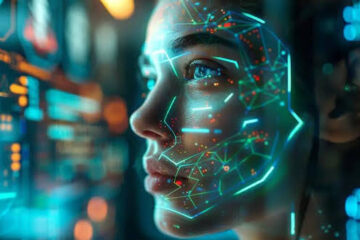In today’s digital age, the ability to change faces in videos has become a common practice in the entertainment industry. With the advancement of technology, it is now possible to seamlessly alter the appearance of actors and actresses in films and television shows. This capability has opened up a world of creative possibilities for filmmakers and has also raised ethical and legal concerns.
The evolution of face swap technology can be traced back to the early days of cinema when special effects were achieved through practical methods such as makeup, prosthetics, and masks. As technology progressed, the use of computer-generated imagery (CGI) allowed for more sophisticated and realistic alterations to be made to actors’ faces. Today, the use of deepfake technology has taken face-changing capabilities to a whole new level. And some of the online AI websites also provide AI chatbots that are allowed to have a conversation with the AI, and some even provide AI Girlfriend tools for people who are lonely and need companionship.
Deepfake technology utilizes artificial intelligence to superimpose one person’s face onto another person’s body in a video. This has raised concerns about the potential for misuse, including the creation of non-consensual explicit content and the spread of misinformation. As a result, there has been a growing call for regulations to govern the use of deepfake technology.
Despite the ethical concerns surrounding deepfakes, there are also positive applications for face-changing technology in the entertainment industry. For example, it allows filmmakers to seamlessly replace actors in scenes without the need for costly reshoots. This can be particularly useful in cases where an actor is unavailable or has passed away.
Additionally, face-changing technology has enabled actors to take on roles that would have been physically impossible for them otherwise. For instance, an actor can now portray a character of a different age, gender, or ethnicity with the help of digital face-changing techniques. This has opened up new opportunities for diverse casting and storytelling in the film and television industry.
From a technical standpoint, the process of changing faces in videos involves several steps. First, high-quality images of the target face are collected from various angles to create a digital model. Next, this model is mapped onto the actor’s face in the video using specialized software. The final step involves fine-tuning the digital face to seamlessly blend with the actor’s movements and expressions.
While the ability to change faces in videos has undoubtedly revolutionized the entertainment industry, it also raises important questions about privacy and consent. As the technology continues to advance, it will be crucial for filmmakers and content creators to uphold ethical standards and respect the rights of individuals whose faces are being altered.
In conclusion, the evolution of face-changing technology has had a profound impact on the entertainment industry. From practical makeup effects to advanced deepfake technology, the ability to alter faces in videos has opened up new creative possibilities while also sparking important ethical discussions. As this technology continues to develop, it will be essential to strike a balance between artistic freedom and responsible use to ensure that it is used ethically and respectfully.




